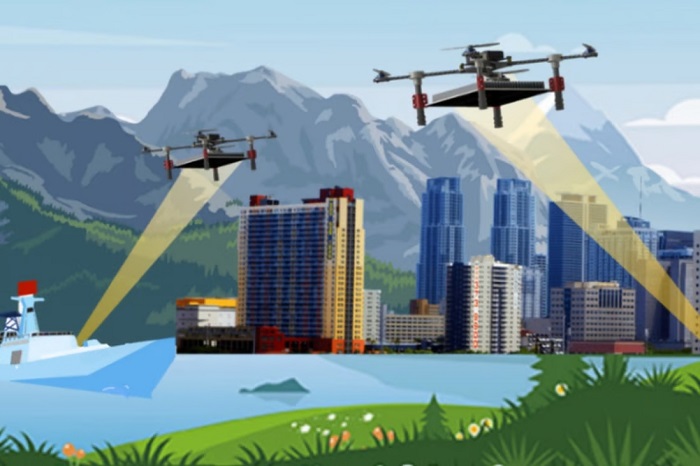ISABEL RUBIO ARROYO | Tungsteno
While some countries are trying to destroy drones with laser weapons, a team of Chinese researchers has used the technology to remotely recharge these devices, allowing them to stay aloft "forever". This could boost their usefulness for rescue or security work, as well as traffic control. We look at the technology’s potential and limitations.
The challenge of remotely recharging a drone
The drone in question has a photoelectric converter on its underside that, in theory at least, converts laser energy into electricity. While such systems do a "pretty decent job of wireless power transmission," the efficiency is "isn’t great," according to science and technology website New Atlas. "At the transmission end, power-to-laser efficiency can be between 50%- 85%, depending on how fancy your laser is, and at the receiving end you’re likely losing around 50% of your energy again," the website notes.
To charge the drones remotely, researchers at Northwestern Polytechnic University in Xianyang, China, needed to track them in the air. They developed an "intelligent visual tracking algorithm" designed to keep the beam pointed at the drone at all times. They also designed a system to shape the beam and adapt it to changes in atmospheric density, as well as a method to detect obstacles and quickly adjust the power of the beam to a safe level.

The system uses laser beams to remotely power drones. Credit: Northwestern Polytechnic University
From rescue missions to traffic control
The Chinese scientists successfully conducted their tests indoors with the lights on and off and outdoors at night. In these tests, the drone reportedly reached altitudes of at least 10 metres. But the researchers are convinced that this system could be extrapolated to higher- altitudes and much more ambitious drone operations.
"In some time-consuming missions, such as searching for tourists trapped in flash floods, the continuous flight of drones will greatly save precious rescue time," say the researchers. These devices could also be used for traffic control, security and logistics. But the researchers go even further, predicting something that at first glance seems far-fetched and more like science fiction: "In the future, large drones can be transformed into air buses to build a three-dimensional traffic network. We can even create a 'low-altitude satellite' or 'artificial moon' with this technology," they add.

Some drones can be used to monitor traffic, deliver packages or carry out rescue operations. Credit: Unsplash
A "prohibitively expensive" method?
While this solution seems promising on the surface, many details about how the system works are still unknown. For example, the researchers have not published data on the system's range photoelectric conversion efficiency. This is a large omission, as the science and technology website Interesting Engineering points out, since running a high-energy laser beam 24/7 to keep a drone airborne could prove to be "prohibitively expensive and would require massive amounts of energy." It is also unclear how dangerous these laser beams might be in open spaces.
At the moment, the researchers only have a laboratory prototype that is still at an early stage. But they are not alone in pursuing this ambitious goal. The US Defence Advanced Research Projects Agency (DARPA), for example, is looking at ways to turn aerial refuelling tankers into "airborne energy wells" to recharge battery-powered drones with laser beams, according to the defence website The Warzone. Whether these methods ultimately prove to be an effective way of keeping drones in the air for extended periods of time or simply an unfulfilled promise, we will have to wait and see.
· — —
Tungsteno is a journalism laboratory to scan the essence of innovation.
